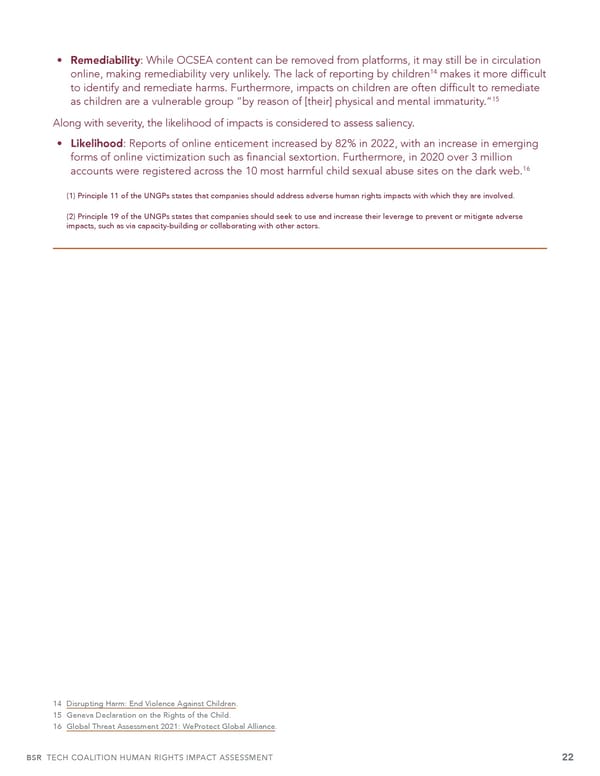• Remediability: While OCSEA content can be removed from platforms, it may still be in circulation 14 online, making remediability very unlikely. The lack of reporting by children makes it more dif昀椀cult to identify and remediate harms. Furthermore, impacts on children are often dif昀椀cult to remediate 15 as children are a vulnerable group “by reason of [their] physical and mental immaturity.” Along with severity, the likelihood of impacts is considered to assess saliency. • Likelihood: Reports of online enticement increased by 82% in 2022, with an increase in emerging forms of online victimization such as 昀椀nancial sextortion. Furthermore, in 2020 over 3 million 16 accounts were registered across the 10 most harmful child sexual abuse sites on the dark web. (1) Principle 11 of the UNGPs states that companies should address adverse human rights impacts with which they are involved. (2) Principle 19 of the UNGPs states that companies should seek to use and increase their leverage to prevent or mitigate adverse impacts, such as via capacity-building or collaborating with other actors. 14 Disrupting Harm: End Violence Against Children. 15 Geneva Declaration on the Rights of the Child. 16 Global Threat Assessment 2021: WeProtect Global Alliance. BSR TECH COALITION HUMAN RIGHTS IMPACT ASSESSMENT 22
 Tech Coalition Human Rights Impact Assessment of the Lantern Program Page 21 Page 23
Tech Coalition Human Rights Impact Assessment of the Lantern Program Page 21 Page 23